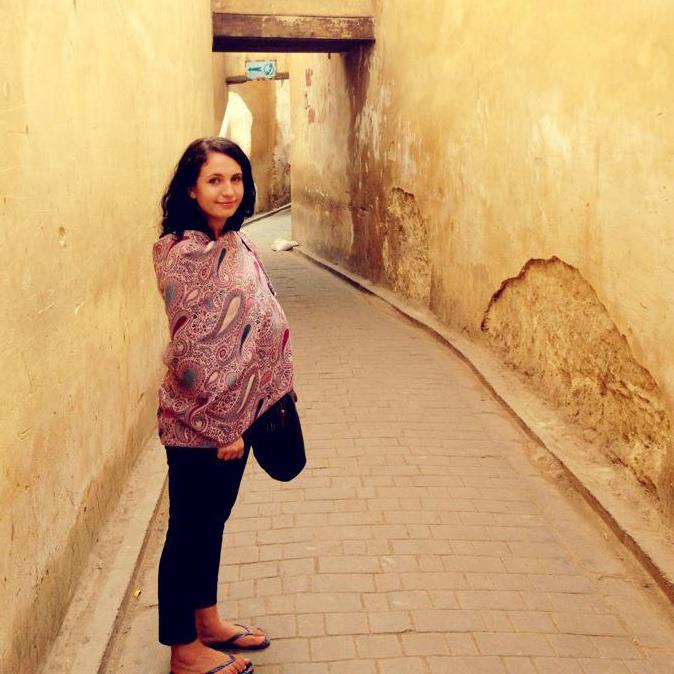Tips for Visiting Newark
Newark is unfairly cast as an unfriendly city. Quite to the contrary, the city welcomes millions of visitors each year to shop, enjoy the beautiful public parks, take in a concert or theatre performance, and sample the delicious cuisine at the city’s diverse restaurants. If you’re planning a trip to Newark, here are some tips to help you get the most from your stay.
Finding Cheap Hotels
Newark’s proximity to New York City, and its reputation as a sophisticated urban center in its own right, can drive up the price of lodgings, especially in the downtown area. If you’re looking for bargains on Newark hotels, consider booking during the off-season, staying in neighborhoods away from the downtown business district, or exploring room share options. You can also find last-minute deals and discount packages for weekend visitors. Hotels near the airport are typically less expensive, but transportation into town can take up to an hour each way.

Enjoy the Public Parks
Newark has a surprisingly appealing array of public parks and recreational spaces. In fact, Branch Brook Park, designed by Frederick Law Olmsted, has the largest collection of cherry trees in the nation. With more than 4,300 trees, the park bursts into bloom each spring with a dazzling display of pastel colors and sweet fragrance. Olmsted’s influence is also evident in the sweeping green lawns of Weequahic Park in Newark’s South Ward. Independence Park in the Ironbound is a cheerful urban space with playgrounds, soccer pitches, and a gazebo, perfect for whiling away an afternoon.
Explore the Restaurants and Culture
Running along Broad Street (Newark’s main thoroughfare) and near the revitalized Military Park, a plethora of charming restaurants, eclectic bistros, and bustling art collectives have taken root. Halsey Street in particular, which runs parallel to Broad, has undergone a cultural renaissance. Spend an afternoon exploring this thriving district, sampling the fare at Elbow Room and Green Chicpea, and browsing nonprofit galleries like Aljira and City Without Walls.
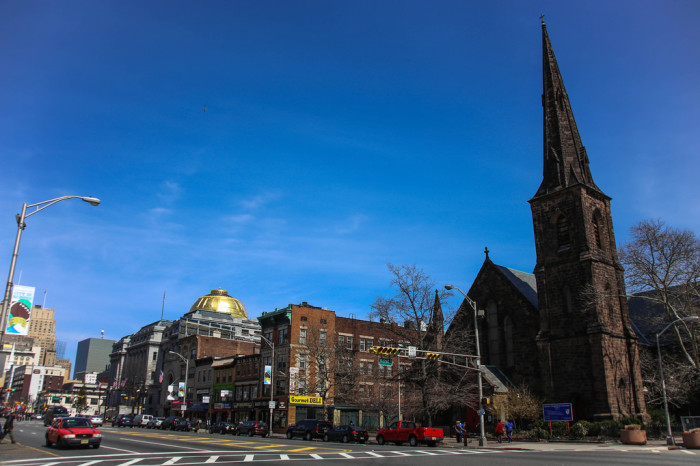
Don’t Miss the Ironbound
This gritty urban district, the city’s most densely populated, is home to Newark’s hip nightlife and entertainment, as well as a vibrant shopping and business area. The district’s Portuguese, Iberian, and Brazilian heritage is keenly displayed in its rich ethnic restaurants and boutiques. If you’re in Newark looking for night-time fun, you’ll find it in the bars, lounges, and clubs of the Ironbound. Don’t miss the delectable treats on historic Ferry Street’s “Restaurant Row.”
In the past, Newark was considered more of an airport city than a destination in its own right, but that impression is changing fast. The city has an active sports fan base; catch the Stanley Cup-winning Devils at the Prudential Center for an adrenalin-boosting adventure. The New Jersey Performing Arts Center (NJPAC) hosts world-class concerts, theatre, and dance troupes, and the Lincoln Park Music Festival brings the best in jazz, hip hop, and blues to downtown Newark. There’s plenty to love about this historic city.
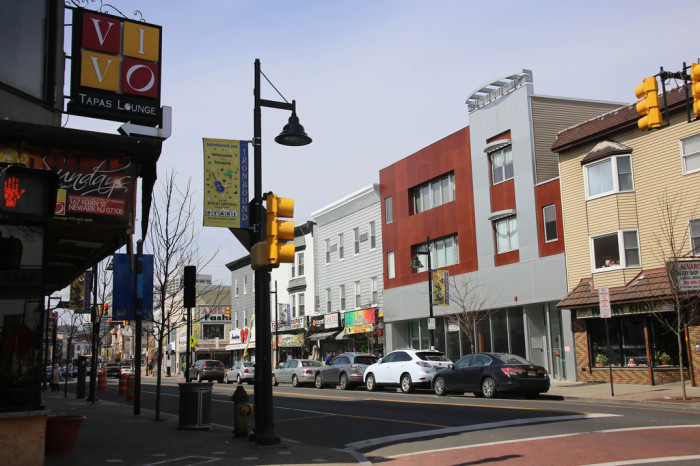
Have you visited Newark recently? Share your favorite tips and adventures in the comments below.
Sheila Westin is a freelance travel writer and food blogger who writes about the charms, cuisine, and culture of the places she visits. When she’s not on the road, Sheila enjoys exploring the excellent restaurants and jazz clubs of her native Washington, DC. Sheila is a writer for the #HipmunkCityLove project.
Top 5 Hotels in Jamaica, New York
Jamaica, a neighborhood in the borough of Queens, provides visitors with a central and inexpensive spot from which to explore the surrounding areas. If you’re planning a visit, try one of these top hotels.
Best Transportation Options: Best Western Jamaica Inn
Best Western Jamaica Inn helps guests explore the area by any means they’d like. Visitors with cars will enjoy the free parking and access to the Van Wyck Expressway. For travelers wanting to explore the city and leave the car behind, a subway station is within walking distance of the hotel. Free high-speed Internet and continental breakfasts keep guests well-informed and well-fed.
Best Option for Leisure Travel: Sheraton JFK Airport Hotel
The Sheraton JFK Airport Hotel has all the amenities travelers want in an airport hotel, including a complimentary airport shuttle, free WiFi in public areas, access to a 24-hour fitness center, and a luxurious bed with a pillow-top mattress. Parking is available for an extra fee, so it’s best to leave your car at home. The Sheraton is pet-friendly and provides an on-site car rental service for added convenience. The hotel is located next door to JFK Airport, so visitors can avoid the traffic and long drive to catch their plane.
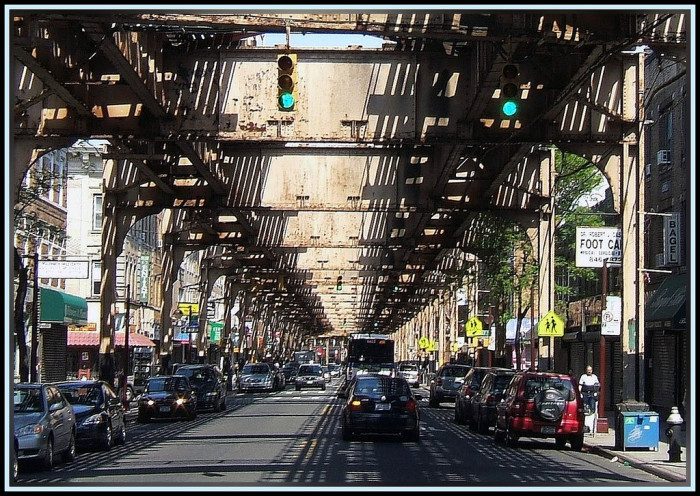
Best Option for Business Travel: Courtyard by Marriott JFK Airport
In addition to a complimentary airport shuttle, the Courtyard by Marriott JFK Airport provides everything business guests need for an enjoyable time. The newly renovated rooms offer the kinds of conveniences that make a difference in one’s stay, like lighting over the headboard (for easy accessibility and late-night work sessions), new 32-inch LCD TVs with 60 premium cable channels, and complimentary wireless Internet in the guest rooms. Express check-in and check-out are available along with boarding pass kiosks to speed along last-minute travel needs.
Best Option for Families: Lexington Inn JFK Airport
The Lexington Inn JFK Airport makes it easy for guests traveling with children. The Inn offers free breakfast, which translates into great cost savings for a family. Complimentary in-room WiFi will keep the kiddies entertained after a long day of exploring the city. The movie theater is less than a mile away from the hotel, as are many fast food restaurants. Additionally, the Briarwood Playground is a mile from the hotel. Older kids will enjoy the hotel’s proximity to malls and recreational venues for bowling and golf.
Best Motor Inn: Super 8 JFK Airport
Guests looking for a cheap, safe hotel need not look further than the Super 8 JFK Airport NYC. Not only is it conveniently located off of I-678, but it also provides guests with free shuttle service to the airport and complimentary WiFi. Visitors enjoy free breakfast as well as smoking and non-smoking room options.
Jamaica is a convenient and inexpensive place to stay for visitors flying in and out of JFK Airport. For more information, check out Hipmunk’s list of cheap hotels in Jamaica.
After your trip, please come back and share your experiences of the area in the comments section below.
Christina R. Green is a freelance travel writer and Hipmunk contributor. She loves kitschy tourist attractions and literary haunts. If she could figure out a way to drive something the size of an RV, she’d take off and write from the road.
How to Save Money when Shopping for Flights
Statistics can be strange, as sometimes they showcase growth and prosperity when none exists. Take the recent consumer spending figures, for example, which rose considerably in the wake of Black Friday and Cyber Monday and record breaking customer output. Despite this, however, it is fair to note that previous figures had been disappointing as households grappled with economic decline. This means that there is still a need for consumers to spend responsibly and in line with their earnings.
3 Ways that you can Save when Booking Flights
If you are planning to book a holiday this winter, for example, it is important that you look to access affordable flights where possible. Consider the following steps towards achieving this:
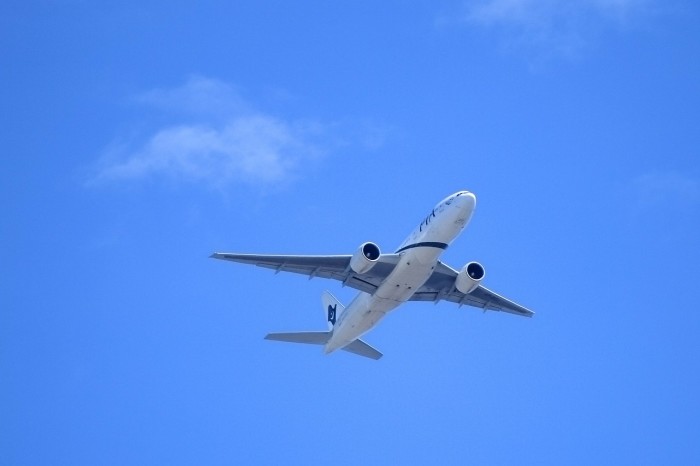
1. Book at the Right Time
The travel industry is one of extremes, especially when it comes to booking flights. Essentially, it is cheaper to book tickets either exceptionally early or at the last minute, and the timing of your action can have a huge impact on the amount that you spend. Early booking help you to capitalise on initial discounts and promotions, for example, while last minute deals tend to be cheaper as original customers have cancelled or airlines trying to fill empty seats. As some revenue is better than none in the eyes of vendors, they are willing to cut prices and share savings with travellers. So don’t be rushed and hold your nerve as you seek out a cheap flight.
2. Engage with Price Comparison Sites
Technology has played a huge role in driving change in consumerism, and it has also helped individuals to access savings. Take price comparison sites, for example, which are objective and list price options across the breadth of an entire market. This is particularly effective if you book flights and accommodation separately, as it enables you to operate without restriction and search a wider share of the market. Attention to detail is crucial when comparing the market, as this will increase your chances of finding a blockbusting deal.
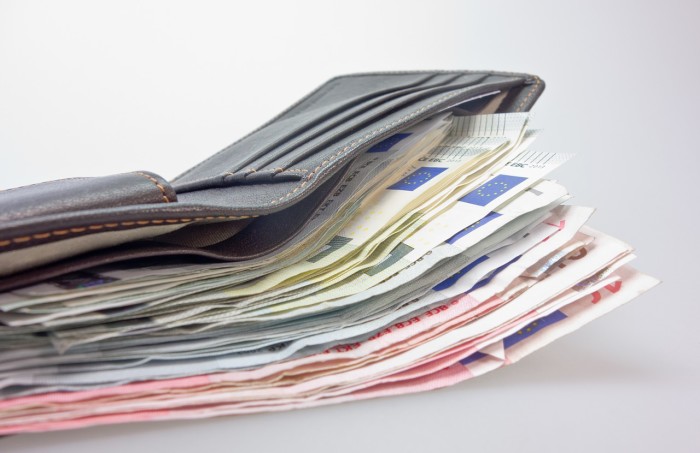
3. Learn the Art of Negotiation
When shopping online for flights, the element of human interaction is removed from the buying process. This does not mean that you cannot negotiate, however, as airlines are physical businesses that will have a landline and email address. This means that it is possible to contact airlines and negotiate on price points, driving an even harder bargain in the process. While this is a delicate art that must be respected, all it really requires is a proactive mind-set and an ability to develop rapport with vendors.
Best luxury spas in Thailand
Thailand is such a beautiful country to visit, rich with culture, good food, friendly locals and stunning beaches. It’s also a great place to visit if you feel like going all out and having a luxury holiday and five star spa treatment. It has everything from five star resorts, where you can have your own private pool, world class spas, luxury boat cruises and fine dining experiences. Rather then going through the hassles of booking it yourself, book a Thailand Holiday with Elegant Resorts and have all your needs taken care of. If a luxury holiday in Thailand is something you want I’ve rounded up my favourite spas you must visit on your luxury holiday there.
Thailand is world-renowned for it’s spas and you can get everything from super cheap to super luxurious. So you can’t go there without booking in at least a few spa days. Be careful though as a lot of them are labeled as luxury when they in fact aren’t at all. Here are my favourites where you can be sure it’s only five star treatments:
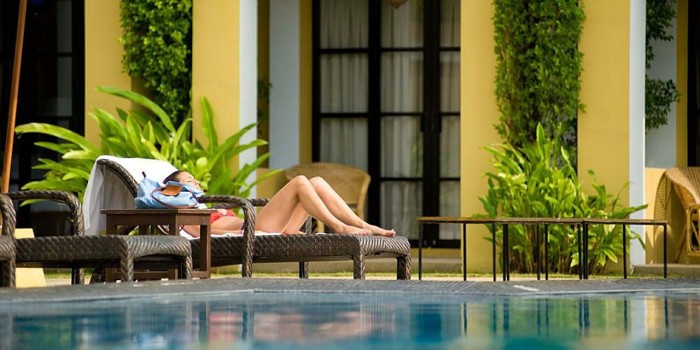
1. Kamalaya Wellness Sanctuary and Holistic Spa, Koh Samui
This is a total wellness retreat, where you can go to detox, restore and simply relax. They have anything from three day packages to full retreats throughout the year with world class teachers.
2. Bayan Tree, Phuket
The world famous spa here is pure luxury, with stunning tropical gardens and Eastern therapies that will help rejuvenate mind, body and spirit. They also offer meditation and yoga classes, making it the perfect place to relax and restore.
3. Royal Natural Spa, Bangkok
This is by far one of the best spas to visit in the bustling city of Bangkok, which has one of the most decadent decors I’ve ever seen. They keep their spa package offerings fresh by changing them on a monthly basis. It’s the perfect haven to escape from the noise and bustling
4. Explore Spa, Chiang Mai
Part of Le Meridien this spa feels like you have stepped into a mini Europe. They offer a beautiful range of European spa products that will only partner with the most exclusive spas worldwide. Their signature treatments will definitely leave you in total bliss.
5. Chiva Som, Hua Hin
This award-winning spa is total luxury and not only offers amazing spa treatments but delicious food too. All their fruit and vegetables are from their very own organic garden, making everything so fresh and tasty. You can also take up their morning tai chi classes if you feel like getting some extra zen.
Have you been to any of these spas? How was it? Tell me your experience in the comments below.
Beach holidays in Gran Canaria
Gran Canaria is the perfect winter escape destination as it offers sunshine and beaches anytime of the year. However it’s not just for beach lovers as it offers expansive scenery and a wide variety of things to see and do. So if you are looking for a summer escape, here’s why you should book a Cosmos Holidays Grand Canaria holiday.
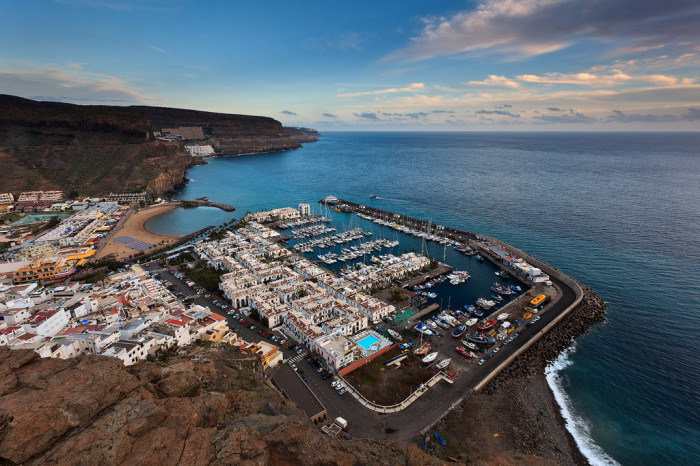
Excellent beaches
Gran Canaria is the third larges isle in the infamous Spanish Canary Islands and one of the most popular. When you get sight of its gorgeous beaches it’s easy to see why. Each beach has something quite different and unique to offer too. Maspalomas beach is famous for it’s large scale dunes, where you can explore on camel back. You can ride jetskis in Playa Del Ingles, which also has a buzzing nightlife. Anfi Del Mar offers the picture perfect white sand and turquoise water Spanish beach. There are also some excellent surf spots on the island too if you feel like hitting the waves.
Las Palmas
A Gran Canaria holiday isn’t just all beaches and you can’t head there without visiting the beautiful village Las Palmas, where you can follow in the footsteps of Christopher Columbus who landed there. Walk through its cobbled streets and discover beautiful museums, tapas bars and restaurants. A definite highlight is the 15th century cathedral.
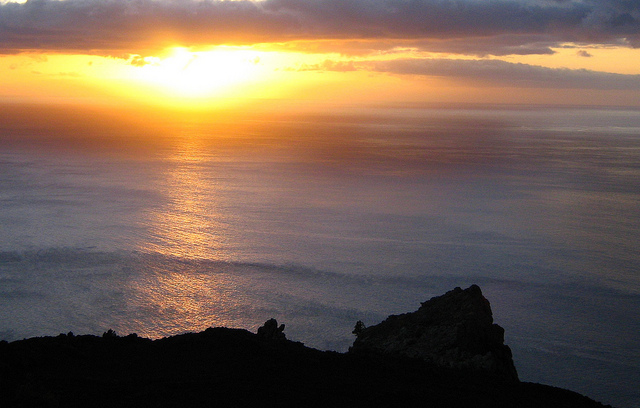
Volcano Climb
You can climb to the top of the Canaries most famous volcano Roque Nublo, which erupted over 4.5 million years ago. Though if you don’t feel like climbing all the way to the top you can still get some magnificent views along the trail and on the drive to the Volcano itself.
Eat up a storm
Spain is well known for it’s delicious food and the food on Gran Canaria definitely lives up to expectations. It has everything from beautiful traditional Spanish tapas to some decadent fine dining restaurants.
It’s great for families
There are so many wonderful family friendly resorts on Gran Canaria and lots of fun activities for the kids making it a great destination for a family holiday. You can go on Dolphin watching tours or swim with the sea lions. If you don’t feel like swimming at the beach then take the kids to the water park. There are plenty of rides from a near vertical slide, to a gentle river ride. You will find plenty to do to keep the kid entertained.
Have you ever been on a holiday in Gran Canaria? Tell me about your experience in the comments below:
Something to Look Forward To — Avoiding Winter Blues With Holiday Deals
If you’re already starting to suffer from the winter blues it may be time to give yourself something to look forward to. Start planning your summer holiday now and you’ll be able to beat the last minute rush and achieve some fantastic holiday deals.
During the dark winter months the summer sunshine can seem like a distant memory, so start taking a look at where you’d like to spend your vacation and check out those early booking bargains.
More time to budget
One of the biggest advantages of booking your summer holiday during the winter is that it gives you more time to pay for your vacation. Of course you can pay the entire price in advance but spreading the cost is a way to budget efficiently for your trip. There are also many travel websites that allow you to book accommodation but pay when you arrive at the hotel. Take a look at sunshine destinations such as Greece, Spain, Egypt or the Caribbean and work out how much you can save each month before placing your booking.
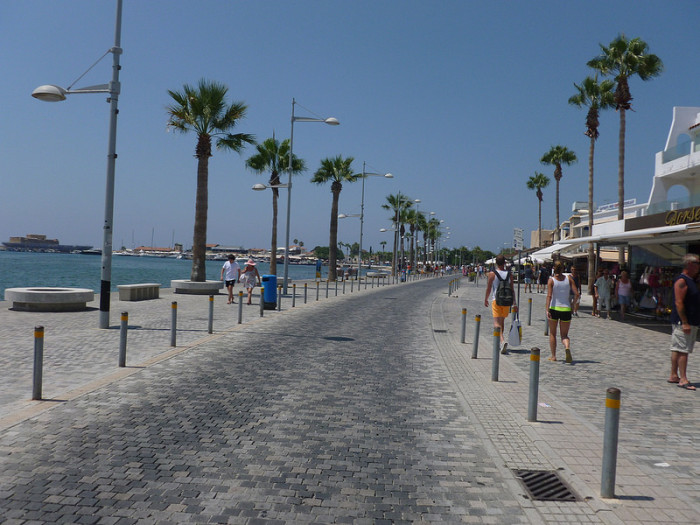
More time to search those sales
Travel companies have sales throughout the year and this is the best time to achieve large discounts on that holiday to Greek hotspots such as Paphos or Turkish destinations such as Marmaris. For additional savings, try to avoid the most popular vacation periods. If you can book even a few weeks either side of the high season you’ll benefit from sizeable savings. Another bonus is that popular sunshine destinations during the high season tend to mean crowded beaches — book a low season holiday and you’ll find the pace a little more relaxed.
Early booking deals
The travel industry is highly competitive and will offer good discounts to consumers to start selling those hotel spaces and package deals as early as possible. The other bonus when booking early is that you have more choice of cheap holidays and aren’t hit with the remaining hotel rooms once the last minute summer booking rush begins.
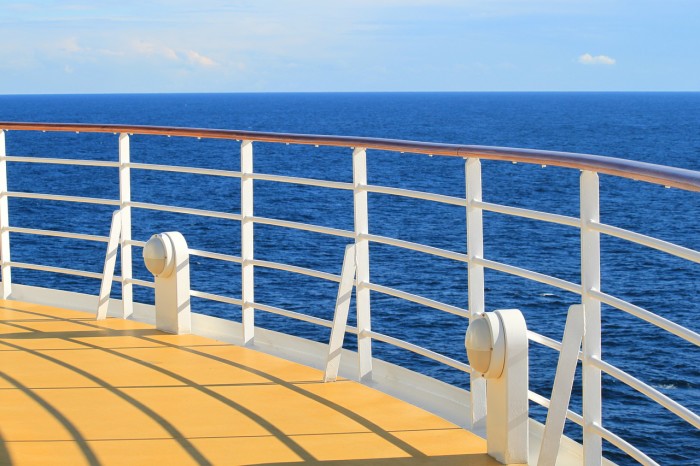
Remember that cruise deal
A cruise means you can follow the sun to Caribbean destinations such as Barbados, to Central American destinations like Mexico or Honduras, or island hopping at the Canary or Greek islands. The bonus with a cruise is that meals and accommodation are normally included in the price. Booking early should mean cheap holidays on the ocean waves.
Merely researching sunny destinations should dispel the winter blues. Remember that the early bird catches the best deals. Research, budget and book in advance to ensure you obtain the vacation you want at a price to suit.
Fiona Kershaw is a globetrotter and bargain junkie and is always planning her next trip. The warmer the destination, the better!
Ivory Resort Seminyak Review
It’s no secret that I love Bali! I’ve spent quite a lot of time exploring beautiful Bali and I’ve come to find a few favourite destinations while there. Seminyak suits me perfectly; it’s relaxed, there’s a beach and a lot of great cafes, restaurants and boutique shops.
I think Seminyak is the perfect destination for the more refined traveller – the type of traveller that can spend a day or two in Kuta and is ready to move on. So where to stay when you’re in Seminyak?
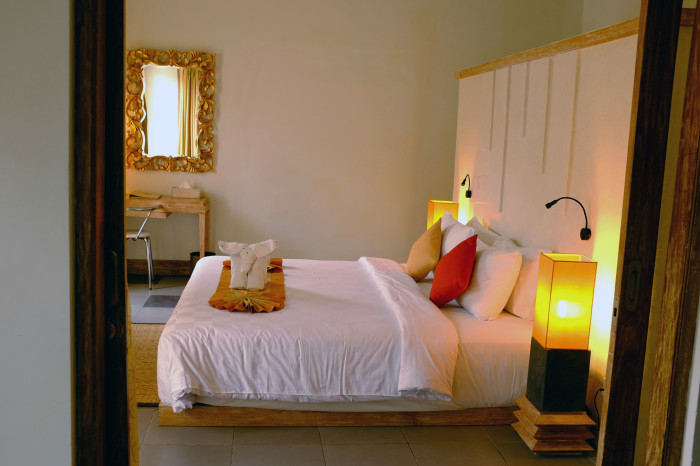
Ivory Resort Seminyak Review
The Location:
The Ivory Resort Seminyak has a great location, it is only a few minutes walk from a number of restaurants and cafes. While taxis are very cheap in Bali, I really like being able to walk around as it’s a great way to get used to where you are and to get some exercise while you’re traveling. Ivory Resort is only a 15 minute walk from the beach. The walk to the beach is lined with heaps of great boutiques and beauty salons, so you might wind up taking a little longer than 15 minutes!
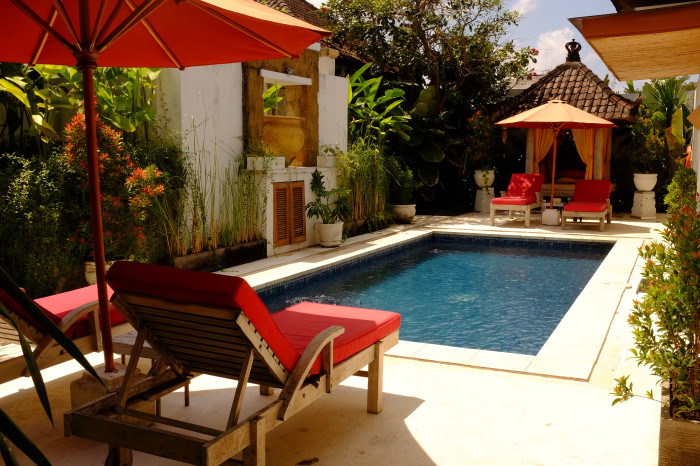
The Facilities:
The type of facilities you will get will depend a little on the room type you’re staying in. I was lucky enough to sample both the a deluxe and private one bedroom villa so was able to sample both. Of course, I much preferred the private one bedroom villa with private pool and giant sun lounger beds. There is also a main pool on site, which is perfect for relaxing and working on your tan. At night time the pool is lit up beautifully and is even nicer to lay by. The resort itself is pretty small, in terms of number of rooms and therefore guests, which makes it feel very intimate.
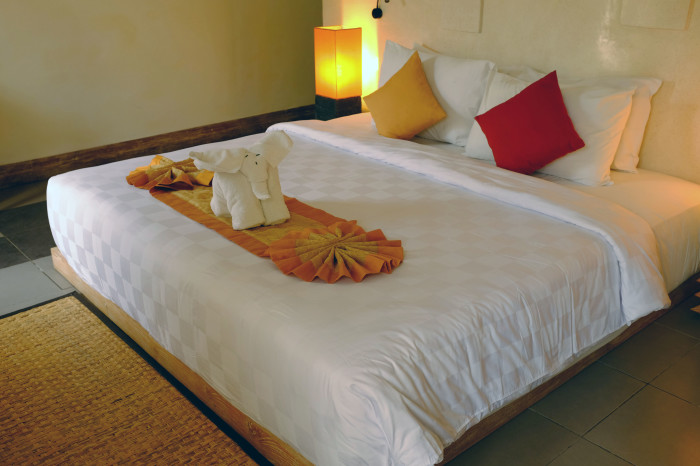
The Deluxe Room:
The room had everything you could possible want for your stay, as well as a beautiful day bed by the entrance that was more than big enough to accommodate two people. I spent a little too long relaxing out here, surrounded by the beautiful greenery. The bed was ultra comfortable and the bathroom was modern and very clean, with a decent pressured shower.
It’s no secret that I love spas and so was very keen to try out the spa facilities at Ivory Resort. The spa is located in between the pool and reception, so it’s very easy to access. The treatments I received here were of a very high standard – the same as I would expect at home, but with the warm Balinese touch.

More About the Villas
I especially loved the villa – it felt so luxurious and as someone who works while traveling, I really appreciated the extra space. At 181 M2, there’s really ample room and it would perfectly suit a couple or family. I was impressed by the kitchen/dining/lounging area as it had a lot of great facilities and felt more like a home than simply a room in a hotel. Having a private pool also goes a long way if you’re like me and not the most confident swimmer! There are actually two villas that share the same large pool, which is fine as we never saw the other guests there during our stay. This would be perfect for a larger family who want to rent the two villas together and have their own private area.
Stay at Ivory Resort Seminyak if you… love exceptional value! The prices of the rooms here are extremely reasonable and comparable to paying for two people to stay in a dorm in a more expensive location, such as Sydney. There’s enough space in both the rooms or the villas that you can be very comfortable here, even for a longer stay. The location is great, the staff are bubbly, and the pool is gorgeous by day or night – what more could you want?
My holiday wish list for 2015
The New Year is just around the corner so it’s time to start thinking about 2015. Rather then going back some old favourites, I thought it would be good to start exploring some new trending destinations that are up and coming on the travellers map. There is always something so exciting about going to destinations that haven’t yet become the “trendy” destinations. I’m already starting to look at Thomas Cook Flights to book tickets for my wishlist for 2015.

Myanmar
Myanmar or Burma only opened its borders up to tourists a few years after shutting it out for over 49 years. However this destination isn’t going to stay quiet for long, in fact it’s already getting quite popular amongst the backpacking crowd. Of course the must see in Myanmar is the ancient city of Bagan, where I definitely plan on taking the hot air balloon for the best views. I’ve heard so many great reviews from fellow travellers about this country, so can’t wait to see what it has on offer.
Belgrade, Serbia
Tourism is still relatively slow in Serbia, but it’s such a great place to visit in Europe to get off the beaten path. I’ve been told Belgrade is a beautiful city with a tonne of charm. It also doesn’t come with the huge expensive price tag that a lot of other European cities come with.

Oman
The Middle East has a pretty bad wrap when it comes to travel due to safety. However I’ve always wanted to explore there more. I’ve heard Oman is the best place if you want to experience true Middle Eastern culture and traditions, and is be in the safest place to do so. It’s a great place to add on as a side trip if you are visiting the bigger more modern cities of Dubai or Abu Dhabi.
Central Asia
Central Asia has been on my list for ages, to get a true backpacking experience. It’s still so untapped on the tourist route making it very desirable for those of us who suffer from severe wanderlust. It offers beautiful landscapes, friendly locals and a very unique cultural experience. I plan on adding all the Stan’s to my list of Turkmenistan, Uzbekistan, Kyrgyzstan, Kazakhstan, and Tajikistan. I’ve been told as it can be a little harder to travel through these countries as they don’t have the developed tourist infrastructure yet, but that’s what I find so exciting about it. I definitely plan on staying in some Yuks and travelling by horseback whilst I’m there.
Do you have your holiday wishlist for next year? Let me know in the comments below.
The Pros of Traveling Solo
I’m writing this post on my flight to Panama City (and posting it a little late…) It feels a little weird to be boarding this flight alone. When I left New Zealand I had completely different plans, although Panama was the end goal. In the past four months, my life has done a complete 360, but I’m learning to roll with the punches.
Over the years I’ve traveled with lots of different people; friends, friends I met on the road, boyfriends, my little sister and, of course, solo. Right now I’m really missing traveling with my fellow travel blogger Stacey from OneTravelsFar as we just ‘got each other’ and it was really easy. Plus, it is really great traveling with a former travel agent.

Despite missing her awesome company (and that of many of my friends) there are things I LOVE about traveling solo. The truth is, when I do travel solo I am rarely by myself, except for during transit. Even then, you are only as alone as you want to be.
Not convinced of the benefits of traveling solo? Check out the reasons that I love to wing it alone
1) You Don’t Have to Compromise
Want to stay in bed until 11am and then have ice cream for breakfast? When you’re traveling solo you don’t have to justify it to anyone. Compromising sucks, especially when you have a limited time in an area. Couple that with someone who doesn’t want to do the same stuff as you BUT doesn’t want to be alone, ugh, nightmare!
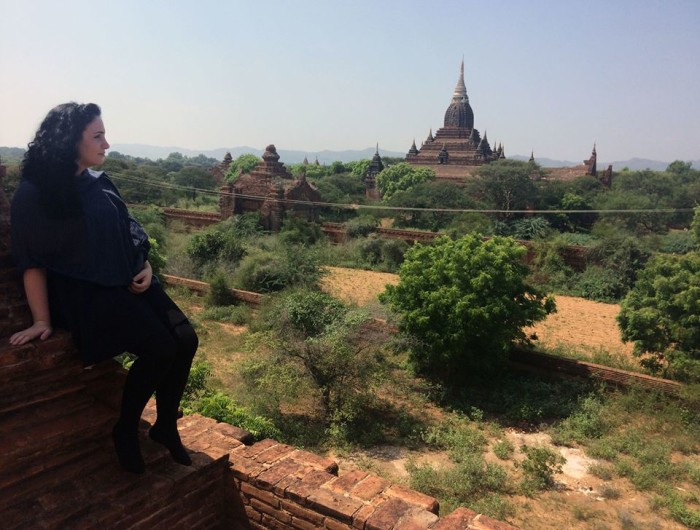
2) You Can Be Whoever You Want to Be
While I love all my friends dearly, there’s something extremely refreshing about turning up to a new location with a bunch of people who know nothing about you. While I haven’t made up any elaborate stories about myself (yet) it’s nice being able to choose what you reveal and don’t reveal.
3) You Have More Local Experiences
When you’re traveling in a couple and too busy sucking each other’s face off next to the Effiel tower or too busy arguing with your sister on the sidewalk, there’s not much room to meet local people. You probably scare them off, actually. When I’m alone I tend to interact a lot more with the world around me – including the people. Traveling alone is much better for my photography.
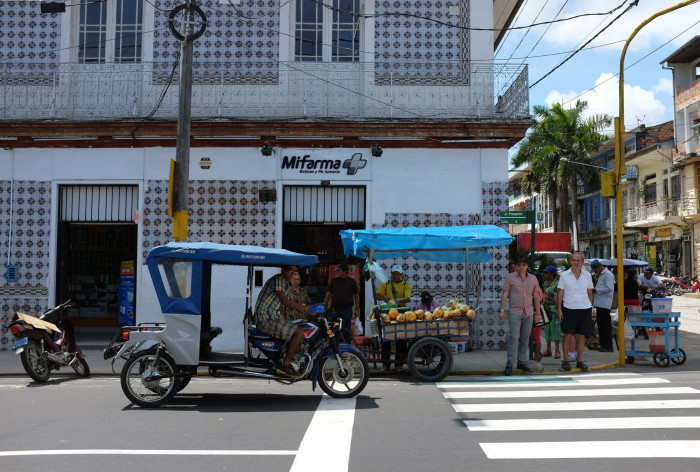
4) You Grow a Lot
There’s something both daunting and exhilarating about turning up to an airport alone, with no one waiting for you. It can be scary in the sense “it’s all on you” to make everything work out: getting to your accommodation, ordering something edible in a foreign language and making the most of your time there. While not everyone will get stabbed like I did, crap happens on the road that can be much harder to deal with than if you were at home, surrounded by loving friends and family. Having the support of a friend with you when something goes pear shape is nice, but there’s a real sense of growth to be found in dealing with it alone.
5) Anything’s Possible
I feel there’s a lot more freedom with traveling solo. Don’t like a place, move on. Don’t like a group of people, move on. It’s a little bit harder to ditch your travel buddies if they’re long time friends or partners… My favourite way to travel is on one way flights solo, spending short segments of my trip traveling with others.
Do you prefer to travel solo, with your partner or with friends? Have you travelled solo? I’d love to hear your thoughts in the comments below.
Things That Suck About Travel
Just a forewarning: I’m sick with a cold at the moment. There are few things in the world worse than being sick when you’re traveling. Not only is everything more of a challenge, that you likely don’t have the energy for, you have to endure being in a New Place With Limited Time, too sick to enjoy it or explore.
Travel is my favourite hobby/obssession. Even though it’s the best thing in the world, it doesn’t mean there is nothing that sucks about travel. In fact, there are a lot of things that suck about travel. I’m tired of reading travel blogs with shiny photos and glamorous stories: lots of parts of travel are very unglamorous. I’ve had so many moments during the past few years where I wanted to just never travel again, buy a piece of land somewhere out in the middle of no where and never-ever-leave.
With my poor planning skills, innate desire to get a ‘great deal’ and affinity for bad luck, I’ve experienced a lot of things that suck about travel, including:
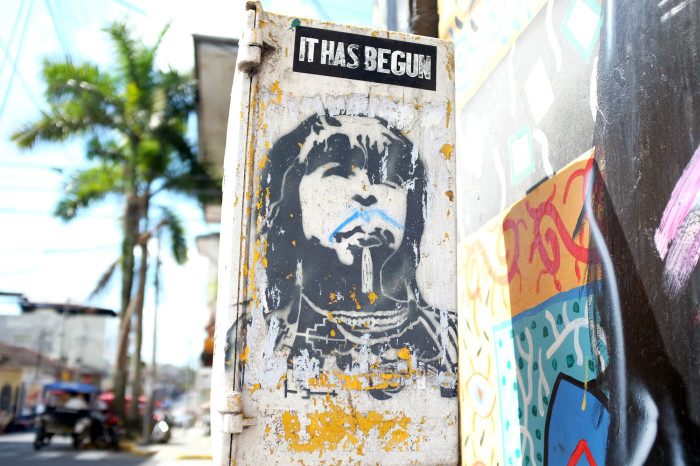
1) Getting Ripped Off
I tend to look up things on Google Maps before ordering a taxi, so I can estimate the distance and price. Yesterday I did exactly that but was distracted by practicing my very poor Spanish with my driver that I forget to check where we were going. The taxi was to the bus station, only 3km from my hostel, but wound up taking half an hour and costing thrice the price. I’m such a sucker for conversation. It’s not that I can’t afford to be ripped off; I always leave a little wiggle room in my budget for this, but it’s painful when you’ve made the effort to plan ahead and start to have that tingling feeling that you’re being taken for a ride.
All I could muster was “muy carro” with puppy dog eyes. The driver didn’t respond and just looked at me with an expression that said: “that was the point, silly gringo”. 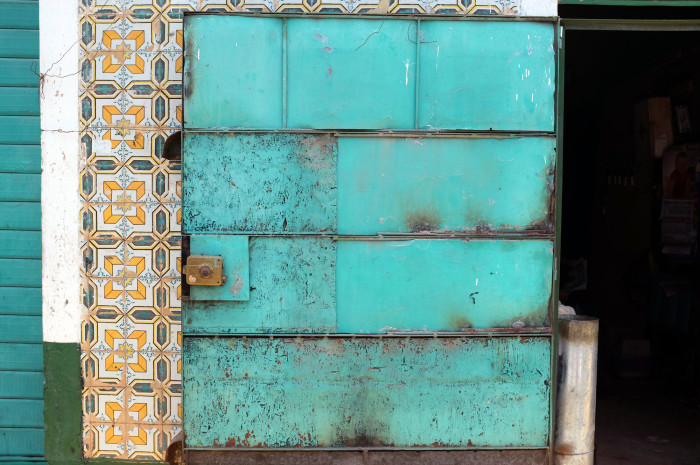
2) Missing Laundry
You know when you’re doing your own laundry at home and a sock or two disappears? That sucks. When you’re traveling it goes one up on that, everything goes missing. I had some laundry done in Iquitos and saw them counting each piece before they wrote down a number (more on this later). I assumed that they would count everything up before returning it to me, so neglected to check. Fatal error. Two countries later and I’m down around 6 pieces of clothing, including half of my underwear sets.
3) Not Being Able to do Your Own Laundry
I recently had a very traumatic experience in that very same laundry shop. I went to the Amazon for 4 days (incase you hadn’t read already: It Was Awesome) and had managed to basically douse my clothes in sweat, sunscreen and Deet. It was disgusting. It was one of the few times in my life that I was genuinely repulsed by myself. I threw ALL my clothes into a bag and marched to the laundry place and slowly slid the bag across the bench, while my eyes pleaded: “I’m sorry, I’m not usually this disgusting”.
To my horror the laundry lady decided to count each piece of clothing. She poured my filthily, crusty clothes on the ground and then individually counted them and placed them back in the bag. I winced. This was the most horrific thing I had ever endured in my life. I wanted to throw money at her, as an apology for her trauma, and take the first flight out of Iquitos. But, I needed those clothes so I did my best to pretend this was all a bad dream. As she slid the receipt over to me, I saw in her eyes a look that I’ll never forget. I wanted to explain to her that I had just been in the Amazon and really, it was not my fault. But I figured it was better to run out of the store as quickly as I could.
Perhaps she stole some of my clothes as payment for what she endured that day. Or maybe she burned them. Either way, I miss doing my own laundry and sharing my shame only with myself.
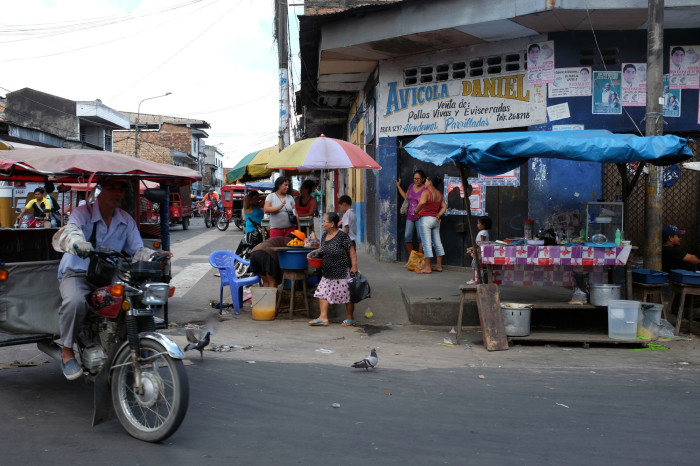
4) Feeling Sick and Assuming You’re Dying
I’m a hypochondriac. Sometimes I think I’m an evolved hypochondriac because I’m aware that I freak out over everything and can often soothe myself “Don’t worry, Izy, you’re just freaking out, you’re probably fine”. This works wonders when I’m in New Zealand and not surrounded by things that are trying to kill me.
While in the Amazon I went on a night walk without a torch (first mistake). During the walk I fell over and grabbed a tree branch to support myself that I couldn’t see (second mistake). Instantly I was at a 8 on the pain scale, but I wanted to play it cool so tried to deal with it by myself in the dark (third mistake). I could feel some prickles in my hand, so promptly removed all three of them. After some time had passed and I was certain I could hold back the tears, my hand still felt like it was on fire so I asked to borrow someone’s torch to assess the damage. It looked fine. The next day I woke up and my hand was infected and it hurt to move it. I couldn’t really clasp things; it was basically useless. For around half an hour I contemplated what would happen if my hand was amputated.
What would happen to my typing speed? Would it halve, or would it be even less than half? Would my left hand learn to compensate for his missing brother? So many questions, so few answers.
Once we returned to civilisation I took some medication and it cleared up in a day or two. But the thing about traveling to weird destinations is that I’m always getting weird illnesses. Then when you’re already feeling lowly you have to go and try to negotiate some drugs from a pharmacist in a wild mix of Spanglish and sign language – while then promptly getting ripped off. Double whammy.
5) People in Dorms Who are Assholes
I like staying in dorms because I like to meet people and steal their travel plans. I have done enough travel planning now that I quite enjoy meeting someone, charming them with fabulous New Zealand accent and then accepting their invitation to join their adventures.
I don’t like staying in dorms because I actually like to sleep.
It’s hard, because in my experience I am best at making friends with people staying in my hostel who are actually in the same room as me. Perhaps it’s because I can catch them off guard, like when they’re trying to pack up their dirty laundry or are just waking up from their slumber. People in the common areas have had coffee and are not so susceptible to my trip stealing. I think, because they’re in the same room as me, they realise they can never escape.
I’ve had numerous opportunities to meet Assholes in Dorms. There’s probably a 1:3 ratio of assholes to cool people in dorms, which is actually pretty good. For every asshole, you’re likely to meet 3 good people. Just enough to keep me from hating dorms, but not enough to make it a pain-free experience.
Recent Assholes in Dorms:
2 girls in Panama who decided that it would be a wonderful idea to turn the bedroom light on at 4am and proceed to talk loudly, in German. I’m sure German sounds fabulous when you’re well slept and it’s an appropriate hour, but at 4am I wanted to stab their eyes out. They weren’t even getting ready for bed, they just wanted to come into the room and chat. They left the room for half an hour, but left the light on. I got up and turned it off. They came back in and I felt like I had been sucked into a time machine and spat out thirty minutes prior, having to endure their shit all over again. Too tired for conversation or any communication beyond an evil glare, I got up and turned the light off and sighed. I can already see my future as a jaded 80 year old hating on the youth for being so spritely and energetic at all hours.
American guy who proceeded to Skype call his best friend about potentially being set up with his sister, while in a shared dorm in Yangon, Myanmar after midnight. Hey buddy, guess what? You’re not at home, you’re not going to be set up with her any time soon so how about you do us all the courtesy of shutting up?
Often the trend of meeting assholes in dorms will be broken up by meeting someone who’s creepy. Creepy people exist everywhere, but it’s annoying when they know where you sleep and have 24/7 access to your room. During my time in San Jose, between sleeping excessive amounts and feeling sorry for myself, a man decided to take a shining to me. Usually I would appreciate this, but he had the same amount of character you’d find in a wrung-out sponge and he was also at least a decade older than my father.
He invited me out to dinner and I was so caught off guard, and too sick to lie strategically, that I went along. Even indulging in one of my favourite hobbies – eating – was not enough to make his company enjoyable. When we returned to the hostel I decided to read a book and placed my handbag next to me on the couch as a clear “Don’t Fucking Sit Here” sign. He, without asking, moved it to the side and proceeded to talk to me. I did my best to barely engage in conversation and maintained holding my book. It didn’t deter him. At one point he went to the bathroom and upon returning decided to grab my toes. I don’t like strange people ignoring obvious social cues, such as ‘leave me alone, now’ and I especially don’t like people touching my feet.
It was just weird. I promptly excused myself to bed and pretended none of it had ever happened.

6) Exceptionally Long Transit
During my early years backpacking, I had so much enthusiasm. A 36 hour bus ride through a third world country with no toilet on the bus and aggressive food poisoning? That sounds like such an *adventure*, sign me up.
Those days are long gone and now even a 5 hour bus ride evokes a childish “Do I have to?” inside my head.
Thankfully on my most recent trip – from Panama City to San Jose by bus – I was so sick that I literally fell into a coma for the entire trip. It was broken briefly to do a border crossing, but I slept the entire 16 hour trip, without any medication.
Exceptionally long travel sucks. Even if you take a few changes of clothes and some wet wipes, you are still sitting in the same position for much too long. You have to strategically plan your bathroom breaks, how much liquid you’ll consume and ration out your electronics battery life. It’s hard work.
7) It’s Addictive
Have you ever ran a race where for every kilometer you run, they move the finish line three kilometers further away? Nope. It probably doesn’t exist, because that would be a very cruel, soul-destroying race. That’s kind of how travel is for me. Not that I’m racing to go anywhere, but the more places I visit, the more I add to my list. It’s like a never-ending to-do list that grows faster than I can tick things off.
So there we go, travel sucks. You shouldn’t do it.

